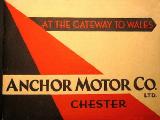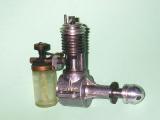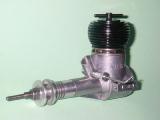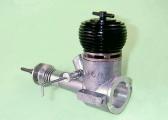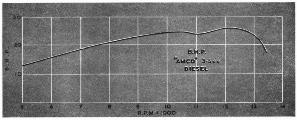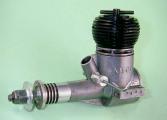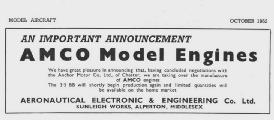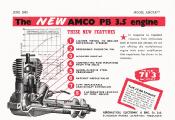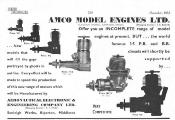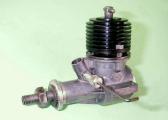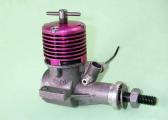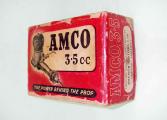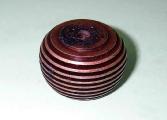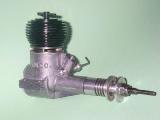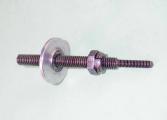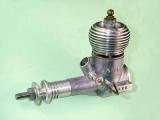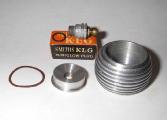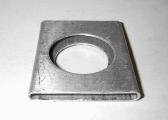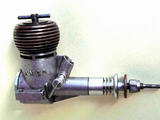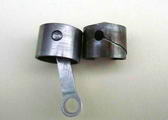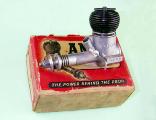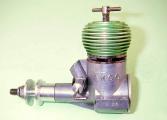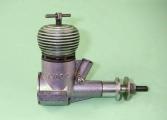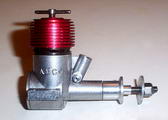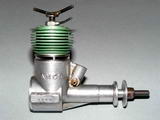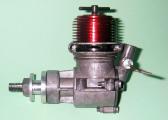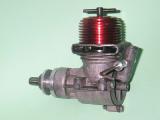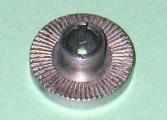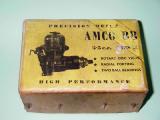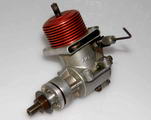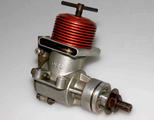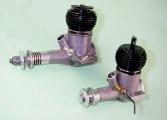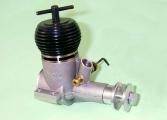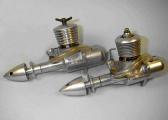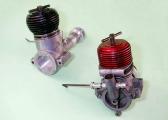The AMCO 3.5 engines
by Adrian Duncan
2011-03
Revised:
2011-04
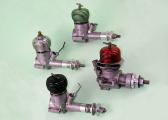 |
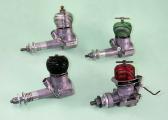 |
|
|
Click on images to view larger picture,
hover over the images for a description. |
||
-
 Background
Background -
 The AMCO 3.5 PB On Test
The AMCO 3.5 PB On Test -
 Subsequent Production History of the AMCO Range
Subsequent Production History of the AMCO Range -
 The AMCO 3.5 PB—The Anchor Motors Variants
The AMCO 3.5 PB—The Anchor Motors Variants -
 A Present-Day Test
A Present-Day Test -
 The Aeronautical Electronic & Engineering AMCO 3.5 PB Models
The Aeronautical Electronic & Engineering AMCO 3.5 PB Models -
 A Few Deductions Regarding the AMCO 3.5 PB
A Few Deductions Regarding the AMCO 3.5 PB -
 The AMCO 3.5 BB
The AMCO 3.5 BB -
 The AMCO 3.5 BB On Test
The AMCO 3.5 BB On Test -
 The AMCO 3.5 cc Engines in Hindsight
The AMCO 3.5 cc Engines in Hindsight -
 A Latter-Day Clone
A Latter-Day Clone -
 The J.B Connection
The J.B Connection -
 Conclusion
Conclusion
In their day, the plain bearing and ball-race versions of the British-made AMCO 3.5 cc were real trend-setter. These engines set new standards in Britain, particularly in the control-line stunt field. Their power-to-weight ratio was approached by few if any of their competitors and most modellers who were active in the 1950's encountered them at some point. They remained in use in quite large numbers long after production had ceased and I recall seeing a few of them still flying regularly when I started power modelling in Britain in 1959.
It appears that interest in these engines remains strong today, since I can't recall receiving so much "fan mail" and additional information following the initial publication of any previous article! The expressions of appreciation which followed the initial appearance of this article mean a lot to me, and I'd like to thank one and all who sent them in - keeps me going!! But equally important is the additional information which readers have so kindly provided. The preservation of model engine history is a shared responsibility, and it's extremely gratifying to find that this view is becoming increasingly espoused by our readers.
The revised text which follows now incorporates a significant amount of additional detail supplied by friends like Kevin Richards, Chris Murphy, Bernard Smith and Jon Fletcher. My very sincere thanks to these valued friends and colleagues!
Having acknowledged my indebtedness to the above-named individuals, it's now time to begin our in-depth look at the AMCO 3.5 cc series. Because they were so highly regarded, people tended to hang onto them. This has had the happy result of ensuring that a significant proportion of those that were produced still survive today. Let's review the history of these trend-setting engines on the basis of our own considerable experience with them!
Background
The AMCO range was the creation of the Model Engineering Division of the Anchor Motor Company, who gave their address as The Newgate, Chester, Cheshire, England. This company was founded in the 1930's as a firm of automotive engineers, and thus had much in common with the contemporary North Downs Engineering Co of Whyteleaf, Surrey, makers of the 10 cc Nordec racing engines, in that their primary business related to full-sized automobiles. In both instances the model engine manufacturing was a sideline, evidently added because of an interest in modelling at the management level. See our tribute to AMCO designer EC "Ted" Martin for a full account of the affairs of the Anchor Motor company.
For reasons which must forever remain unclear, the manufacturers of the AMCO range only used their own company name in connection with their initial AMCO .87 Mk. I offering. Thereafter, they always identified their engines as products of Anchor Motors rather than the Anchor Motor Co This was presumably done to distinguish their model engine business line from their automotive activities. It's not clear that Anchor Motors was a distinct corporate identity in any formal sense.
By whatever name, the AMCO manufacturers got off to a good start with their neat little .87 cc side-port model, which was introduced in August 1947. This very popular little engine was originally designed by a chap called Basil Healey of Ilford in Essex (not Rayleigh as often reported). In a note to the present writer, the late and much-missed Ron Moulton was at pains to point this out, stating that his first diesel was a Healy purchased directly from Basil Healy at his Ilford workshop, where Healy made the engine in very small numbers for local sale under his own name before selling the design to the Anchor Motor Co
Once a few initial production difficulties were sorted out following the mid-1947 arrival of Ted Martin, the AMCO .87 sold very well indeed and was upgraded in 1948 into a Mk II version which exhibited a number of quite substantial revisions, including a new crankcase. This in turn was supplanted in December 1948 by a Series II version of the AMCO .87 Mk II, which featured modifications to the transfer arrangements and the working components.
The success of the AMCO .87 was such that by 1949 the AMCO name stood high in the affections of British modellers. This set the stage for a favourable response to the company's first venture into a larger displacement category, which came in May 1949 with the announcement of the soon-to-be-famous 3.5 cc plain bearing (PB) diesel which introduces our main subject. This was the first AMCO model to be designed from the ground up by Ted Martin.
The new model was promoted by the makers as "the first engine ever to be designed and built specifically for modern C/L stunt and speed". While a few American manufacturers might have taken issue with this unqualified statement, it certainly had some validity in a purely British context.
The AMCO engines were distributed by Mercury Models, which was operated by Henry J. Nicholls from his well-known shop at 308 Holloway Road, London. Mercury Models also acted as the service centre for the AMCO range, with the well-known modeller and later engine manufacturer Dennis Allen in charge. This arrangement relieved Anchor Motors of the need to undertake repairs at the Chester factory—all they had to do was turn out the engines!
Despite a few early failings, including a rash of broken crankshafts and a tendency towards rapid con-rod wear, the AMCO 3.5 plain bearing diesel remained a quite popular engine for a number of years. It was particularly favoured by control-line stunt fliers on account of its high power and light weight, although the same characteristics made it a free flight standout as well.
The AMCO 3.5 PB On Test
The model engine commentators for the British aeromodelling publications were quick to spot the potential of the new design, and the first test of the engine soon followed its introduction. This was conducted by AMCO distributor Henry J. Nicholls and was published in the 1949 issue of Model Aviation Planbook
Uniquely among engine testers in my experience, one of the criteria recorded by Nicholls was the time that it took him to get the engine started for the first time following its initial mounting in the test stand. He tested three examples of the AMCO 3.5 PB (as the distributor, he had unlimited access), getting them going in 31 sec., 57 sec. and 1 min. 17 sec. respectively. Not bad, straight out of the box!
Nicholls praised the engine's handling and running qualities as well as its light and compact construction. He found a peak output of 0.247 BHP @ 11,200 rpm for the best of his three examples, but reported that it appeared to require further running-in since the performance was continuing to improve with running time. Nonetheless, when coupled with the very light weight of only just over 4 ounces this gave the AMCO the highest power-to-weight ratio yet recorded in any model engine test published up to that time.
Nicholls reported that one of the engines showed excessive con-rod big end wear at the conclusion of the tests—apparently a not-uncommon failing with the early examples of this engine. He also experienced some difficulty keeping the cylinder of one example sufficiently tight to prevent unscrewing during running. But he recorded no other problems, and his assessment was extremely favourable in all other respects.
One very insightful comment made by Nicholls was the fact that the AMCO's unprecedented power-to-weight ratio as well as its compactness actually made it necessary to design one's model specifically for the engine. If it was used in a model designed for engines of comparable output, it would upset the balance point due to its extremely light weight unless the design was suitably modified. Conversely, it would overpower a model designed for engines of similar weight and bulk.
This statement underscores the strong influence that progress in engine design was exerting upon model design during this very dynamic evolutionary period in modelling history. Even today, I find myself envying the experiences of modellers engaged in what must have been a very exciting period of rapid and inter-related development in so many facets of the modelling hobby.
The AMCO 3.5's next test appearance took the form of a report by Lawrence Sparey which appeared in the December 1949 issue of Aeromodeller. Sparey was very complimentary about the engine's performance, stating that starting hot or cold presented no difficulties and that the engine "ran well and evenly at all speeds from 5,000 to 14,000 rpm". He noted a tendency towards inconsistency at speeds below 5,000 rpm, leaving one wondering what he was doing testing an ultra-short stroke engine of this specification and performance at such speeds. Clearly old Lawrence was a member of the "old school" who had some difficulty adapting to the performance characteristics of the then-evolving breed of (to use Sparey's own term) "hot stuff" diesels!
Sparey obtained a peak of 0.260 BHP @ 11,600 rpm, thus slightly bettering Nicholls' figures. For context, it's worth noting that in January of 1949 the same tester had obtained just 0.246 BHP @ 8,900 rpm from the Mk I version of the far bulkier and heavier 5 cc K Vulture.
Poor old Sparey experienced his usual trouble with unscrewing of parts during operation and also noted that the con-rods in the early examples had proved to be somewhat fragile and had since been replaced with revised components made of a superior material. Both of these observations are consistent with Nicholls' earlier comments. Sparey also noted the availability of a factory glow-plug conversion kit for the engine.
Sparey's power curve for the engine displayed an odd "dip" just below the peak, a feature which was also reflected in the curve published by the manufacturers. This actually prompted Sparey to test a second example of the engine, with the same result. It's hard today to account for this anomaly, but there it is. It's also worth noting that Nicholls' results had not displayed this characteristic.
Oddly enough, the rival Model Aircraft magazine waited until May 1951 to publish a test of a plain bearing AMCO 3.5 cc, and even then the published test focused on the factory-made red-headed glow-plug model which had been introduced in mid 1950. The author (almost certainly Peter Chinn) noted the prior existence of a glow-plug conversion kit for the AMCO 3.5 PB diesel (of which more in its place below), but pointed out that this kit was intended primarily for use in diesel models which were "well run in" in diesel form (or, as a Motor Boy would put it, well clapped out!). The factory-assembled unit which was the subject of this test was a purpose-built glow-plug model which was reportedly assembled with a 0.0002 in. greater piston clearance by comparison with the diesel version.
Chinn (assuming it was he) noted that operation on glow-plug ignition should increase the speed at which peak power was developed, at the cost of some loss of flexibility arising from the sacrifice of the fine ignition timing adjustment permitted by diesel operation. This was borne out in practise, since the engine was found to peak at just over 13,000 rpm, some 1,000 rpm higher than the figures obtained later by Chinn (see below) for the companion diesel model. The glow version did not match the diesel for torque, but the fact that it maintained its torque at higher speed meant that it was actually found to produce more power than the diesel, a peak of 0.295 BHP being reported.
Overall, Chinn was quite favourably impressed with the AMCO 3.5 PB glow-plug model, stating that in its optimum speed range of between 10,000 and 15,000 rpm "the engine ran with a good crisp (exhaust) note and held fairly even torque readings". He also praised its handling qualities, stating that it was "better, in this respect, than the diesel model". His sole criticism related to the split-thimble needle valve, which reportedly failed to maintain settings in the face of the engine's operational vibration.
The first test of the diesel version of this engine did not appear in Model Aircraft until November 1952, after the Anchor Motor Co had ceased production and had sold the AMCO range to others (see below). This test was extremely interesting in that the author's first order of business was to explain the relatively late appearance of this test, well over three years after the engine's introduction. The main reason for the delay was cited as "a rather severe crop of structural failures which beset this design shortly after its introduction". These reportedly included "many crankpin, con-rod, shaft and gudgeon-pin failures". The tester (almost certainly Peter Chinn) had wished to give the makers time to react to these difficulties, hence the delay in the test.
The article referred to improvements having been made in the form of a revised con-rod (as referred to earlier by Sparey) as well as upgraded heat treatment specifications for the steel components. Oddly, no reference was made to changes in the shaft design which are known from surviving examples to have been introduced in addition by this time. The report went on to recall the earlier test of the AMCO 3.5 PB glow-plug model, which had come through its test with flying colours.
This test was of course published during the period when the AMCO 3.5 PB was temporarily out of production, the design having been sold to the Aeronautical Electronic & Engineering Co of Alperton, Middlesex (near Ealing) who had yet to resume production (see below). According to the report, new examples were still occasionally to be found in the odd model shop, and used examples were widely available
The report made much of the fact that the AMCO 3.5 PB had apparently acquired a reputation as being difficult to start. Chinn (assuming it was he) refuted this claim most decisively, stating that he had handled half-a-dozen examples apart from the one under test and had found them all to be perfectly straightforward to start provided the correct technique was used. The main requirement was reportedly to use some means of introducing fuel directly into the upper cylinder—choking alone would not suffice. The very large transfer port area doubtless had much to do with this.
Chinn recommended 3 or 4 choked turns followed by inversion of the model and then flicking with the compression backed off a little. In my own experience, a healthy port prime works just as well without the need to invert, and I have never had any trouble at all starting one of these units in this manner. Neither, it would seem, did Nicholls or Sparey on the basis of their previously-mentioned tests.
Chinn repeated his earlier criticism of the split thimble needle valve set-up, which failed to retain needle settings sufficiently dependably on the bench, and also mentioned the need for a lengthy break-in period. Otherwise, he had little but praise for the engine. He found a peak output of 0.285 BHP at just over 12,000 rpm, which he noted was bettered among contemporary designs only by the companion AMCO 3.5 BB model (see below). He also commented on the outstanding power-to-weight ratio of the engine.
It's interesting to note that the diesel version of the engine fell slightly short of matching the performance of the glow-plug model measured by the same tester in May 1951. However, the diesel developed greater torque at lower revs and would thus be expected to swing a larger and hence more efficient airscrew. Moreover, there's no doubt at all that a well freed-up example of the diesel would handily beat the published figure.
Subsequent Production History of the AMCO Range
During the three years following its introduction, the AMCO 3.5 PB came to occupy a very high place in the affections of performance-oriented power modellers in Britain and elsewhere. Although the rigors of actual use in the field quickly revealed a number of areas in which the design required improvement (as noted by Chinn in the above-referenced test report), the company was quick to learn from these experiences and make the required modifications. For those interested, we will go through the various changes in detail in a following section.
Despite the success of this model, by 1951 the company clearly saw a market for an even higher-performance unit, and in August of 1951 the famous Martin-designed AMCO 3.5 BB version of the engine was announced to wide acclaim. This was an entirely new design which featured a twin ball-race crankshaft and rotary disc valve induction. It was an immediate success, setting new performance standards for its displacement category.
Despite this, shortly after designing the AMCO 3.5 BB for the Anchor Motor Co and seeing it through the early stages of series production, Ted Martin not only left the company but also left England! On January 5th, 1952 (a date noted by Peter Chinn in his April 1952 "Accent on Power" column in Model Aircraft Martin sailed for Canada, where he had accepted an engine development job in the automotive industry. However, he retained ambitions of starting his own model engine company, beginning with an ultra high-performance twin BB .049 diesel with which to compete in the huge US �-A market. Chinn probably remembered this matter very well indeed because Martin had apparently invited Chinn to join him in this venture. Perhaps wisely as things turned out, Chinn declined.
Although his planned .049 diesel project unfortunately never got off the ground, likely due to funding difficulties, Ted Martin's association with model engines continued through his position as the resident engine tester for Model Airplane News for some years in the mid to late 1950's. For more information on Ted Martin's remarkable career, see our companion article on his life and work.
The move by Martin may well have taken place as a result of his reading certain writing on the wall. As of 1951 the Anchor Motor Company had become heavily involved in Government contracts, to the point where their ability to devote resources to model engine production was becoming increasingly compromised. By April 1952, things had reached a point where model engine production had to be suspended in favour of the far more lucrative Government work.
The AMCO name, designs, parts and dies were offered for sale, and were eventually purchased by a newly-formed London-based company, the Aeronautical Electronic & Engineering Co of Alperton, Middlesex (near Ealing). The managing director of this company was a certain FF Wells, about whom I have been unable to uncover any specific information.
The initial announcement of the take-over appeared in an advertisement which was placed by the new owners in the October 1952 issue of Model Aircraft. This announcement included the information that production of the AMCO 3.5 BB would re-commence "shortly". An identically-worded announcement appeared in the November 1952 issue of the rival Aeromodeller magazine.
The name of the Aeronautical Electronic & Engineering Co suggests a concern with electronics in addition to model engines. As it happens, this was far from coincidental! The management of the new venture was soon to be reinforced by none other than Jack E. Ballard, who was a former Managing Director of the competing Electronic Developments (ED) company. ED had always been as much involved in electronics as they had with engines, and Ballard understandably brought this perspective to the new venture as well. The new company did indeed enter the radio control field during their rather short lifetime with their Avionic line.
Ballard had apparently come to a parting of the ways with E.D. because he had ideas about future design and marketing trends which differed radically from those of his rather conservative fellow E.D. Directors. This made a split inevitable. It appears that Ballard saw the change of ownership of the AMCO range as his opportunity to make the break from E.D. while remaining involved with the model trade which by then he knew so well.
After the AMCO range was taken over by Aeronautical Electronic & Engineering in the latter part of 1952, there was a hiatus in production while the new company got its manufacturing facilities established at the new location. This presumably also allowed Ballard the time that he needed to completed his disengagement from E.D., thus avoiding the creation of a conflict of interest. In the interim, the company wisely retained Dennis Allen to assist them in getting set up to resume production of the flagship 3.5 cc models.
There could have been no better choice than Allen to step into the shoes of Ted Martin. Allen was a highly competent aeromodeller who had been among the pioneers of control-line stunt flying in Britain with his famous "Box Car" models. He thus understood the practical challenges of model engine operation in the field. In addition, he had worked as one of the engine repair wizards at Henry J. Nicholls' famous shop at "308" during the time when Nicholls' Mercury Models division was acting as the trade distributor and service centre for the AMCO engines. He therefore had the opportunity to get to know the AMCO engines very well indeed, especially with all those broken crankshafts and worn-out rods!!
At some point in 1949, Allen was "loaned" by Henry J. Nicholls to Allbon Engineering to assist Allan Allbon in the production of the Allbon 2.8 and the development of the Arrow and Javelin 1.5 cc models, subsequently becoming a full-time Allbon employee and working on the development of the famous Dart .55 cc diesel which appeared in late 1950. However, when Allbon initiated a merger with Davies-Charlton in early 1952, Allen was out of a job. He then spent some time working in the general precision engineering field, but model engines remained his first love. Accordingly, he was happy to accept a late 1952 invitation to assist Aeronautical Electronic & Engineering Co in resuming production of the AMCO 3.5 cc models.
Kevin Richards has reminded me of the fact that there is evidence to suggest that Allen was not the only "name" model engineering type to work at Alperton—it seems that Arthur Weaver, noted IC powered rail-car proponent and designer of the well-known Weaver 1 cc home-built engine, was also employed by the new company. It would appear that the venture had an engineering staff with an unusually strong model engine background!
There were no plans to resurrect the old sideport .87 model, so the immediate priority was the resumption of production of the very popular 3.5 models, starting with the 3.5 BB for which there was a high level of pent-up demand. This model finally re-appeared on the market in January 1953 and was the subject of a Ron Warring test which appeared in the May 1953 issue of Aeromodeller It's worth noting here in passing that Warring's test report gives the name of the new makers as "Aeronautical & Electronic Engineering Co". This is incorrect—the "&" is where I've consistently placed it elsewhere in this article, as confirmed on the boxes and in the advertisements.
It took a little longer for the AMCO 3.5 PB to re-enter production—as far as I'm presently aware, the initial advertisements for this re-introduced model appeared in June 1953. As we shall see, it incorporated a few well-considered modifications from the original Anchor Motor Co design, but remained basically the same engine.
Upon Ballard's arrival at Aeronautical Electronic & Engineering Co in mid 1953, the company was divided into two distinct divisions. The engines were manufactured by Aeronautical Electronic & Engineering Co, which continued to be led by F. F. Wells as Managing Director. However, a separate entity known as AMCO Model Engines Ltd. was established to market the engines, with Ballard in the position of Managing Director. At this stage, Dennis Allen was still involved with the company's technical side.
Ballard immediately drew up an ambitious plan for a major expansion of the AMCO range, as reflected in the company's advertisement in the December 1953 issue of Aeromodeller which also highlighted the division of the company into the two previously-mentioned business entities. However, these plans never matured to the commercial level, at least under the AMCO name.
The design improvements which are reflected in the later models of the 3.5 PB (to be described below) must surely be credited to Dennis Allen. However, Allen had not confined his attention to the AMCO 3.5 cc models—in his spare time he had been working on the design of a new lightweight 2.5 cc model which he believed to have considerable commercial potential. According to an article which appeared in the June 1958 issue of Model Aircraft, he offered this design to his new employers, who were not interested. This rejection had far-reaching consequences for all concerned, since Allen's unswerving belief in his new design led him to seek other avenues for getting it into production.
Allen had maintained his close ties with Henry J. Nicholls and Mercury Models, and in mid 1954 this association resulted in the introduction of Allen's first diesel under his own name, the Mk I Allen-Mercury (A-M) 25. This was of course the very design which had been rejected by Aeronautical Electronic & Engineering Co It's interesting to contemplate how differently matters might have unfolded if it had been released as the AMCO 2.5! As it was, the new model was manufactured by Allen's own company, DJ Allen Engineering of Edmonton in North London and was marketed by Mercury Models, hence the name.
It's clear from this that Allen's association with Aeronautical Electronic & Engineering Co must have ended at some point in the first half of 1954. Allen's departure seems to have left a major void in the engineering department of the company, because it appears that AMCO production sputtered thereafter and ended in early 1955—the last advertisement for the AMCO engines of which I'm presently aware appeared in February of that year. Oddly, this final advertisement announced the release of a new version of the 3.5 BB with removable exhaust stacks! Little more was heard of this ultra-rare variant, of which only a few examples exist today to prove that it did at least reach the production stage.
The very over-square bore and stroke of the AMCO 3.5 must surely have influenced Allen when designing the later A-M 35 (released in April 1955), since he adopted exactly the same bore and stroke dimension for that engine. But he was careful to use a very sturdy shaft for the A-M 35! So despite its different porting system, the AMCO 3.5 PB may thus quite legitimately be seen as being very much the "parent" or prototype of the A-M 35. I love connections... AMCO-23 ()
Having looked at the fate of the AMCO line and seen Dennis Allen safely on his way to prominence as a British engine manufacturer, let's now begin our detailed technical review of the various models which together made up the AMCO 3.5 cc series. Since it was the first AMCO 3.5 cc model to appear, it seems appropriate that we should return to May 1949 and trace the development of the AMCO 3.5 PB that started it all.
The AMCO 3.5 PB—The Anchor Motors Variants
The history of the AMCO 3.5 PB is complicated by the fact that it underwent a greater-than-usual number of detail modifications over its production life and was also manufactured by two distinct companies, each of which put their own design stamp upon the engine. It's instructive to attempt to tie the various changes into the serial number sequence, beginning with the examples which were manufactured by the original makers, the Anchor Motor Co of Chester, or Anchor Motors as they styled themselves on the boxes and in the literature supplied with the engines.
But before doing so, it's worth summarizing the common points shared by all variants. Bore and stroke remained constant throughout at 17.46 mm (0.687 in) and 14.29 mm (0.562 in) respectively for a displacement of 3.42 cc (0.209 cuin). These were unusually over-square dimensions by contemporary standards. Weight also remained essentially constant at around 114 gm (just over 4 ounces).
The same cylinder design was used for all the AMCO 3.5 models (including the later BB), with 5 radially-disposed exhaust slits discharging through a port flange which located the screw-in steel cylinder in the crankcase. There were also 5 internally-milled transfer flutes which terminated just below the exhaust ports. This system has the drawback of not allowing any overlap between exhaust and transfer ports, thus imposing a relatively long blow-down period. To offset this, it does allow for very large transfer port areas.
The rather heavy cast iron piston had a conical crown, with the contra-piston being contoured to match. The working piston of the Anchor Motors variants was not internally machined in any way to lighten, which is a pity since direct experience confirms that these engines run far better if the piston is internally lightened by milling, leaving plenty of material at the boss locations. No doubt cost considerations were a factor here, but it's still a bit odd that the makers didn't carry their obvious quest for overall lightness of the engine into the area of the piston where weight reduction would confer a definite benefit upon performance and reliability. It was left to their successors to take this step.
Another problematic design feature was the fact that the gudgeon pin did not pass completely through the piston. Only one end of the transverse gudgeon pin hole in the piston was left open. The pin passed though the open hole in the piston to engage with a blind hole in the other piston boss using a press fit. The intent was clearly to discourage lateral movement of the pin and possible fouling of the transfer ports.
Rather oddly, the open end of the pin was not machined in any way to facilitate its removal. This made rod replacement a bit of a pain—I have heard of people drilling these pins out from the blind side as their only recourse!
The cylinder, cooling jacket and backplate were all screw-in items, allowing for extremely compact and lightweight construction—no screws were used anywhere in the engine. Induction was through a perfectly conventional crankshaft front rotary valve (FRV) system.
It has been reported from time to time that some of the early AMCO 3.5 PB engines had brown-anodized cooling jackets. This is incorrect—in fact, the cooling jackets of all of these early engines started out life as black-anodized components. However, the black dye used in the anodizing process quickly developed a pronounced brownish hue under the influence of repeated heat cycles. I know—I've watched this happen! You can see in the attached image that the black color has survived in the centre of the head at the coolest point during operation.
My mate Kevin Richards has reported the existence of a number of examples of the Chester-built AMCO 3.5 PB diesel which were sold with red-anodized heads. I've never encountered one of these myself, but they clearly do exist—Kevin has seen a few of them. Presumably they date from after the introduction of the red-headed glow-plug version of the engine in mid 1950. It's likely that some of the PB diesel heads went into the same anodizing batches used for the glow and BB diesel heads. This change was not made wholesale—some of the highest-numbered 3.5 PB examples have black heads. The red coloration was presumably confined to certain specific batches.
All of the engines produced by the Anchor Motor Co apparently featured the split-thimble style of needle valve as used on the one tested by Sparey. They also featured the standard �" prop-driver which greatly increases the overhang of the prop when mounted, although shorter drivers could be purchased as optional extras. The long drivers were of course a good feature for cowling of the motor, at the cost of increasing crash stresses on the case and shaft. The long driver had a number of grooves turned into it, presumably for cosmetic reasons—the number of grooves varies.
A bad feature of all of the Anchor Motors engines was the compression screw—this was far too short and far too close to the top of the cylinder jacket. Peter Chinn had quite legitimately criticised the engine on these grounds. The top of the jacket was numbered circumferentially in the same manner as on the earlier AMCO .87 models, presumably to allow the recording of compression settings.
So much for the constant features. Let's now take a look at the changes which become apparent as we work our way up the serial number sequence of the 3.5 PB engines produced by the Anchor Motor Co
139—a very early example from my own collection which is Like New In Box (LNIB) and has had only a few bench runs. It has a black-anodized head which is un-faded from hot running. The very low serial number indicates that it is one of the very earliest models dating from 1949, and it has the original and notoriously weak "big hole" shaft with large centre hole and induction port as well as a rather "primitive" lightweight rectangular crank web.
The use of such a web is difficult to explain in any other terms than an almost obsessive desire to keep the overall engine weight as low as possible. In practical terms, the more material in the crank web, the more inertia there is to resist vibration caused by the combined reciprocating mass of piston, gudgeon pin and conrod. This built-in lack of crankweb inertia may in part explain why these shafts always broke in service sooner or later—that very heavy piston needed some resisting! But the main reason for these breakages is almost certainly the inherent structural weakness of the shaft itself. You only have to look at one of them to see that the boring of the very large central gas passage leaves far too little wall thickness for adequate strength, particularly with an unbalanced 3.5 cc big-bore short stroke plain bearing diesel and an ultra-lightweight crankweb. The round induction port in the shaft journal surface is also far too large for comfort, structurally speaking.
This example also has the original rod, which appears to be of cast "pot-metal" and wore very rapidly—both Henry J Nicholls and Lawrence Sparey commented on this in their respective 1949 tests, as did Peter Chinn in retrospect in his November 1952 test.
I recall my "old-timer" fellow modellers talking about these problems during my early power modelling years beginning in 1958, when a fair number of these engines were still in use. According to them, the AMCO 3.5 PB only survived the teething troubles of its introductory year in part because of the maker's solid reputation based on the success of the AMCO .87 and also because of the 3.5's excellent performance coupled with light weight, which were advantages that simply couldn't be ignored. Moreover, the company stood behind its products and showed itself to be responsive to the issues as they became apparent, thus generating customer confidence.
The cut-away drawing which accompanied Sparey's test of this engine shows the rectangular crank web and other structural details clearly but is misleading in one respect—the shaft is depicted as having an integral threaded portion for mounting the prop, with a smaller-diameter extension which screws into an internally-threaded hole in the shaft for mounting a spinner. In reality, the main shaft ends at the front of the taper upon which the prop driver mounts. The shaft is centrally drilled and tapped 2BA back from that point almost (but not quite) to the induction passage, and a separate 2BA prop fixing stud called a "shaft screw" by the manufacturers threads into this hole.
The so-called "shaft screw" has an integral forward extension of smaller diameter which is threaded 6BA for convenient attachment of a spinner. Most users cut off this extension, since with an un-cowled mounting and no spinner the thing was a real nuisance and bent in any crash! But the boxed and almost unrun number 139 retains the shaft screw in its as-supplied form, although it is the sole example which I have that does so—all the rest have been trimmed or perhaps were never equipped with the spinner extension.
The use of this separate prop mounting stud was doubtless a good idea in terms of protecting the shaft from crash damage—a replacement shaft screw was no big deal by comparison with a replacement shaft. A nice touch was the use of a 2BA prop nut which featured a fibre insert for a measure of self-locking. This was carried through the entire production life of the engine. All but two of my examples have such a nut, as does the engine depicted in Sparey's cut-away drawing—the others are presumably replacements for lost prop nuts.
422—also from my own collection. Another early example. This one has been converted from diesel to glow operation using the factory glow conversion, which was available as an accessory more or less from the outset. It originally had a slightly faded black standard diesel head (illustrated earlier), which was still with it when I got it and remains with it today, as do the original contra-piston and comp screw—a careful owner, obviously! These components clearly did some running before they were removed for the installation of the glow conversion.
The accessory glow head is left plain with no anodizing. The engine retains a short-reach KLG Miniglow plug as recommended by the factory—very stylish! It has the same fragile rod and shaft as number 139, although someone has (as usual) removed the spinner mounting extension from the front of the shaft screw.
Although the engine is in very nice (EXC) condition, it has clearly been mounted and run a fair bit by a careful owner, and I think that the fact that the shaft and rod are still with us is simply a reflection of the fact that glow operation is far easier on these components than diesel operation! I've actually run this one myself, and it starts and runs well (and very noisily!) but seems to produce less torque than its diesel equivalent. By "feel", compression ratio seems a bit marginal—probably good for the shaft, though! A bit of nitro really helps to smooth put the running because of the low compression ratio. I've never rev-tested it on a series of props—I should do so sometime. I bet the diesel would beat it handily on the big 'uns.
The glow conversion kit is in two parts—a head button with the tapped hole for the short-reach plug, and a screw-on cooling jacket which clamps the button in place on the top of the cylinder. This jacket has a large hole in the centre to provide clearance for the plug. There's also a sealing gasket of some kind of fibre material that supposedly seals the unit properly. Seems to work well on my own operational example.
It's extremely interesting to read the comments in the instruction leaflet about the glow head conversion! The makers specifically state that no advantage accrues from the use of this accessory until the engine has had "several hundred hours" of running and is effectively worn out for diesel operation! The manufacturers claim that the glow conversion will offer "a new lease of life at peak power" as an alternative to discarding a worn-out diesel! How they ever managed to put "several hundred hours" on one of the original examples with the under-nourished shaft beats me.
The main point of interest here is that the glow head was promoted as a means of prolonging the useful life of the engine rather than as a legitimate alternative to the diesel. All I can say is that number 422 is very far from being worn out for diesel operation—the piston fit is superb! So the original owner of that engine clearly ignored these instructions—he probably ran the thing in as a diesel and then switched right away to the glow conversion.
Apart from the glow conversion kit, there was also a twin exhaust stack unit which was available as an accessory. I have one of those, although it's currently not fitted to an engine and apparently never has been—image attached. In addition, a number of prop drivers of differing lengths were available as extras, to allow for locating the prop at different distances from the main engine body to aid cowling. The standard driver supplied with the engine was � " long, but alternative drivers of 1/2" and 5/16 " could be purchased.
In mid 1950, the makers released an over-the-counter glow-plug version of the 3.5 PB. This was simply a 3.5 PB diesel which was works-fitted with a standard factory glow conversion and had a more loosely-fitted piston. However, the cooling jackets of the factory-assembled glow-plug models were anodized red to distinguish them at a distance from their black-topped diesel counterparts. It was one of these units which was tested by (presumably) Peter Chinn as reported in the May 1951 issue of Model Aircraft.
1149—this is a recent eBay acquisition by Bernard Smith. It is of typical configuration for the early examples of this model, having the usual black head, weak big-hole shaft and cast "pot-metal" rod. It also retains the full-length shaft screw.
Although the black coloration of the head suggests that this example actually had relatively little use, Bernard reports that the rod was well and truly shot. However, the most interesting point brought out by this particular engine is that it exemplifies yet another failure mode for this design. As received, the piston was found to be cracked starting from the open end of the gudgeon pin hole. This may be an example of the "gudgeon pin failures" mentioned by Peter Chinn in the November 1952 Model Aircraft test to which reference was made earlier.
2798—this is the cited serial number of the one illustrated by Fisher in his well-known book. It clearly has the wrong nva, and reportedly had a black head, which is not obvious in Fisher's photo (#72, page 101). No information regarding its internal structure.
3276—this is the number of the engine tested by Sparey in December 1949 if I read it correctly in the photo. This engine still has the weak "big hole" shaft if the cut-away drawing is to be believed, but Sparey claims that the rod is of a different and more durable material. I suspect that the comment on the material is correct—I have such a rod in one of these engines (number 6309) which has been run a fair bit with no problems.
4792—owned by Jon Fletcher. This one is a black-head diesel model with the usual brownish coloration due to heat. This one originally had the early big-hole shaft with rectangular web, but Jon noticed that this shaft had a hairline crack starting opposite the induction port in the usual failure mode for these shafts. A replacement was made with a full-disc crankweb. Nonetheless, this example shows that the big-hole shaft with rectangular crankweb stayed around for a surprisingly long time despite its demonstrated inadequacies. This engine also had a turned alloy con-rod in place of the earlier cast one. Thanks to Jon for this very useful bit of information.
5440—EXC, in box, from my own collection. Black head which has seen very little running, but now has a far stronger shaft with smaller centre hole (more metal to resist bending and shear stresses) and smaller induction port (less of a stress-raiser) as well as a plain unbalanced full disc crank web instead of the odd rectangular shape used previously. Obviously they learned from sad experience! Like engine number 4792, the engine also has a well-machined alloy rod which inspires far more confidence than the earlier cast ones. The turned rod is similar to that used in the companion BB model as well as in the later green head engine # 940 (below). The extra-long shaft screw extension is missing from the shaft in this engine also.
It's worth noting in passing that the revised crankshaft appears to have been in use by early 1951 at the latest, since the cutaway drawing of the AMCO 3.5 PB glow model which appeared with the May 1951 Model Aircraft test of that model clearly shows the revised crankshaft. Of course, it could well have been introduced some time before that date.
The design represented by number 5440 appears to have remained fixed from there on until the end of production by the Anchor Motors Co in mid 1952. There is however evidence to suggest that the company used up some of the earlier cast rods which remained on hand in their spares inventory by installing them in some of the later examples of this model (see below).
6309—my usual "flyer" from my own collection, in EXC condition, although obviously used quite a bit and has had considerably more use from me. Very little wear, though—all fits remain excellent, and the engine has a positively "silky" feel when turned over slowly, with no "stiction" at any point. Black head, which as usual has faded to brown from the effects of heat. Small-hole shaft, but unaccountably reverts to the earlier cast rod. This may be a case of the makers using up a left-over component from their spares inventory and probably indicates that this example was manufactured near the end of Anchor Motor's production—indeed, a few such rods were still on hand to be used up in the later engines made by the successor company (see below). I've actually used number 6309 quite a bit, and I must say that the rod has stood up pretty well.
9334—owned by Jon Fletcher. This one arrived in very abused condition, although it retained a quite well-preserved black head. Its primary significance is the fact that it has the highest serial number yet reported for one of these engines. It is of course possible that the series extended further than this, and we would be most grateful for any authoritative information which would allow us to extend the known range of serial numbers.
A Present-Day Test
Just for fun, I bench-tested engine number 6309 not that long ago, with the following excellent figures being obtained:
| Propeller | Speed (rpm) | BHP |
|---|---|---|
| 10 x 4 Taipan grey G/F nylon | 10,000 rpm | 0.256 |
| 9 x 6 Taipan grey G/F nylon | 10,300 rpm | 0.274 |
| 9 x 4 Taipan grey G/F nylon | 12,000 rpm | 0.311 |
| 8 x 6 Tornado nylon | 11,500 rpm | 0.290 |
| 8 x 6 Taipan grey G/F nylon | 11,800 rpm | 0.300 |
The BHP figures in brackets are approximate only, being derived from estimated airscrew power absorption factors for the airscrews in question. They cannot be taken as precise, but they do imply a peak output of around 0.30 BHP at around 12,000 rpm—a little higher than the figure reported by Chinn and considerably higher than the numbers reported by Nicholls and Sparey. Indeed, the implied performance is considerably in excess of the manufacturer's own claims.
This well-used example is evidently a "good 'un" and is doubtless far better run-in than any of the originally-tested units, which probably explains the considerably higher performance. Clearly there's plenty of lovely torque on hand! Overall, this is a very handy performance indeed for a classic 1952 diesel weighing only 4.1 ounces.
The engine started immediately if a small prime was given, and ran flawlessly. No hint of the starting problems reported by others, and it's no wonder that people liked them so much—plenty of power for not much weight. I chose not to push it above 12,000 rpm in deference to its age (60 years and counting). In any case, both Sparey's and Chinn's tests as well as the power curves supplied in the instruction leaflet show peak power occurring at just over 12,000 rpm, so there's no point in pushing things any higher.
I've found that for control-line flying a wide-blade 9 x 6 seems to be a perfect match—I use a trimmed 10x6 myself. On such a prop, the motor hits peak rpm in the air and pulls a model very well indeed while remaining well within safe rev limits. In flying trim, the engine won't quite match the performance indicated by the above figures—suction with the stock spraybar is minimal because the intake is far too large for the diameter of spraybar used, so you have to restrict things a bit. I use my own nva for flying to preserve the original, and even then I have to use a venturi insert to get the thing to suck consistently in an aerobatic model! Good pulling power regardless.
The Aeronautical Electronic & Engineering AMCO 3.5 PB Models
With the previously-documented resumption of AMCO 3.5 PB production in mid 1953 by the Aeronautical Electronic & Engineering Co, a few more consequential changes made their appearance. In conjunction with the change of ownership, the serial number sequence appears to have been re-started from engine number 1. Let's look at these revised designs.
522—an interesting example from my own collection. This one is LN, and has a green head. It uses the later small-hole shaft with plain disc crankweb, but retains the earlier cast rod or a facsimile thereof. It's likely that they were simply using up existing stock—the purchase deal with Anchor Motors included all parts on hand. The presence of a similar rod in my Anchor Motors example number 6309 implies that a few of these rods were still hanging about at the approximate time of the transfer and were used up by being built into engines.
Kevin Richards has kindly drawn attention to a very subtle change which had escaped my previous notice. As we shall see when we come to discuss that model, the cylinder of the AMCO 3.5 BB differed in length very slightly from that of the Anchor Motors version of the AMCO 3.5 PB and the gudgeon pin hole in the piston was differently dimensioned and located. Hence the piston/cylinder/rod components were not interchangeable between the two models. The new manufacturers very sensibly wished to use the same piston, cylinder and rod for both models, and the case of the revised 3.5 PB model was accordingly made fractionally higher to accommodate the BB components.
An internal modification that was long overdue is the reduction of reciprocating mass through the internal milling of the piston. The component used by Anchor Motors had always been far too heavy, and the revised model with its lighter piston must have benefited considerably in terms of performance and reliability.
The extended �" prop driver is gone as a standard item, the new driver being the shorter �" item, reducing prop overhang to a substantial degree. The new driver has no grooves cut in it either. However, the maker's advertising claimed that prop drivers of varying lengths remained available as accessories.
The needle valve is now a simple plain un-split and lightly corrugated thimble which is tensioned by a conventional double-sided spring clip. It is definitely more positive in action than the old split thimble. The compression screw is higher and hence far more convenient to handle, and the numbers on top of the cylinder are gone. They were never of much practical use, really. The extended front element of the shaft screw is history—there's no sign that such an extension was cut off from the shaft screw fitted to this engine.
940—as above, and in LN condition, in my own collection. This one also has the green head, but a turned alloy rod as in number 5440 is now used. It will be recalled that such a rod had been used from the outset in the AMCO 3.5 BB, so this actually represented a move towards standardization of components. The piston retains the internal milling to reduce reciprocating mass. The shaft is the stronger small-hole version, but the crankweb disc is now very nicely counterbalanced like that of the 3.5 BB—a good move in view of the still-heavy piston. The same new-style needle valve and shorter prop driver are used.
Another subtle change pointed out by Kevin Richards is the fact that the mounting lugs of the later examples of the Alperton-built AMCO 3.5 PB models such as this one were not drilled through horizontally like those made by Anchor Motors—presumably it had finally been recognized that few if any owners would consider radially mounting one of these engines. The elimination of these holes cut out one manufacturing step and also strengthened the lugs. I've never run this one, but I'd guess that it would be a very fine performer, and quite dependable too.
960—this engine appeared in April 2011 on eBay. It has horizontally undrilled mounting lugs and the clicker-style needle valve assembly, and is thus clearly an Alperton product. It has a red-anodized head having a different contour from engine number 940 - the head in fact appears to be the same one used on the final examples of the companion 3.5 BB (see below). As far as I'm presently aware, it appears to represent the final developed form of the 3.5 PB.
1346—owned by Chris Murphy. This one reverts to the green head seen on engine number 940. It also features the horizontally undrilled lugs and the turned alloy rod of the earlier Alperton engines. Somewhat oddly, however, it also reverts to the plain-disc crankweb seen on engine number 522 which had been supplanted in engine number 940 by a seemingly superior counterbalanced component.
This may be another case of the manufacturers using up stock on hand, and may indicate that this engine dates from the latter stages of production at Alperton. Certainly, this engine bears the highest serial number yet brought to my attention for one of these engines.
Again, any serial numbers which extend the known range of the Alperton-produced AMCO models will be most sincerely appreciated and fully acknowledged.
A Few Deductions Regarding the AMCO 3.5 PB
What to make of the above litany? First of all, it seems clear that these engines were sequentially numbered starting at number 1. However, the numbering seems to have gone back to 1 again when the green-head models appeared after the take-over by Aeronautical Electronic & Engineering. This event appears to have taken place after perhaps 10,000 examples had been produced by Anchor Motors over a period of some 3 years—an average of some 275 engines monthly, give or take. This is well below the known production figures for such major producers as the rival E.D. company, for example.
The relatively low production figures implied by the presently-known serial numbers suggest that model engine production remained very much a sideline with the Anchor Motor Co This is scarcely surprising when we reflect upon the scope of their automotive activities. Most likely the model engines were made in batches during periods when the machine shop was under-utilised. It's also noteworthy that production must have been a lot higher than this at the outset—say 500 per month—since Sparey was able to publish a test of engine number 3276 in December 1949.
In terms of design features, the original rod was made of a material which wore rapidly in diesel service, as noted by Sparey. The material of this rod was evidently changed, although the rod remained of the same general design at this point. This must have occurred fairly early on in the production life of the engine—Sparey implies in his test published in December 1949 that the rod material had been changed, and he was speaking about engine number 3276 when saying this. The change probably occurred rather earlier than that. The improved cast rod seems to have been replaced by a turned alloy item at some point around engine number 4000 or so, although left-over cast rods were evidently fitted to some later examples, presumably to use up stock on hand.
The original big-hole shaft with rectangular crankweb seems to have lasted a surprisingly long time before the manufacturers finally yielded to sorry experience and began using the far stronger small-hole shaft with full-disc crankweb. We know of engine number 4792 which originally had the early type of shaft, but by the time we get to 5440 we find the redesigned shaft being used. It thus seems likely that the change was made at around engine number 5000, although examples with lower serial numbers having the later shaft will doubtless be encountered as a consequence of the replacement of broken shafts with the updated components. The change probably took place in mid to late 1950.
The original shaft was woefully inadequate for diesel operation, although it was probably OK for glow service. The problems were two-fold—it had both an oversized induction port which created a major stress-raiser at that point, and it also featured an oversized central hole which left far too little wall thickness to resist shear and bending stresses. The web was also extremely skimpy for an engine of this size. As a result, these shafts didn't last long in service! Sparey's example survived his testing somehow, but many didn't last all that far past the break-in if my old-timer colleagues from my early modelling days were to be believed. The crack in the original shaft of Jon Fletcher's number 4792 is, alas, all too typical.
This must have quickly become apparent to the manufacturers based on the requests for spares which they doubtless received, and it's really odd that they persisted for as long as they seem to have done with this shaft design. Presumably they tried changing either the material or the heat treatment specifications (or perhaps both) before bowing to the inevitable and re-designing the shaft.
When it did finally appear at around engine number 5000, the redesigned shaft proved to be a far stronger unit having a smaller induction port and a smaller centre hole. They also went to a full disc crank-web—a good move for the reasons stated earlier. Performance probably suffered a little from this change and weight went up a fraction, but the engines no doubt became far more dependable. And as my number 6309 proves, they still ran pretty strongly!
It was apparently Aeronautical Electronic & Engineering who introduced the un-numbered green head and later the counterbalanced shaft. Indeed, an advertisement placed by them in the June 1953 issue of Model Aircraft focused on the re-introduced AMCO 3.5 PB design, drawing attention to its turned alloy con-rod, lighter piston and revised needle valve among other features. They also shortened the front end of the motor to a significant degree. Doubtless Dennis Allen can be credited with these improvements.
The fact that number 522 uses the old plain-disc small hole shaft and cast rod suggests that they likely acquired a batch of those components in the sale from the Anchor Motors Company, which they elected to use up before switching to the superior components seen on number 940. The presence of a full-disc web in engine number 1346 may be another case of using up parts on hand.
Having reviewed the AMCO 3.5 PB in some detail, it's now time to return to mid 1951 and take a look at its top-of-the-range companion—the AMCO 3.5 BB.
The AMCO 3.5 BB
When the AMCO 3.5 BB was released in August of 1951, it caused quite a stir—it was a relatively sophisticated design with an astonishing performance by the standards of its day. It seems that Ted Martin had become extremely interested in racing engines, and indeed he recalled in later years that he had tried without success to sell the Anchor Motors management on the idea of producing a 10 cc racing glow-plug model. For reasons which are not hard to understand in commercial terms, they preferred to see him develop a smaller diesel model for which a significantly higher level of demand might be expected.
Given this background, it was only to be expected that the new AMCO 3.5 BB model would incorporate a number of "racing" features. These included a twin ball-race crankshaft and a rear rotary disc valve. In fact, this was an entirely different design, with almost no components being interchangeable between the PB and BB models.
The new BB model used the same bore and stroke figures of 17.46 mm (0.687 in.) and 14.29 mm (0.562 in.) respectively for a displacement of 3.42 cc (0.209 cuin)—still unusually short-stroke geometry by then-current diesel standards. The cylinder porting too was identical. However, for reasons which are unclear, the cylinder of the BB model was very slightly different from that of its PB companion. The threads for the screw-on cooling jacket were made slightly shorter than they had been in the earlier PB model. Our thanks to Kevin Richards for pointing this out.
Somewhat remarkably, the addition of the various "racing" features only increased the weight by a matter of some 1.5 ounces over the PB to 156 gm (5.5 ounces)—still a very reasonable figure for a high-performance twin ball-race 3.5 cc diesel.
The one-piece aluminium alloy crankcase was among the most impressive and complex pressure die-castings produced by the early post-war British model engine manufacturing industry. Apart from the necessary accommodation for the two ball races in the front housing, it also included a pair of exhaust stacks, one on each side, as well as unusually complex mounting lugs having expansions at the mounting hole locations. There were also lugs for the rear cover retaining screws.
One area in which this casting proved to be a little lacking was the main bearing. A number of users have reported cracking problems both with the main bearing itself and with the front ball race housing. I've never experienced this myself, but its definitely a point to watch when considering the purchase of one of these engines.
There has been considerable confusion regarding the material used for the AMCO 3.5 BB cases. The fact that they have a dark grey hue has led many people to the conclusion that they were cast in magnesium alloy. Fortunately, Peter Chinn set this matter straight in his August 1951 test of this model. He stated quite categorically that the cases and backplates were cast in LAC. 112A aluminium alloy which was chromate-treated (or anodized, according to Chinn) to produced the characteristic dark grey hue. The engines treated in this way are often referred to as the "dark case" engines.
Cylinder porting was identical to that of the PB model, with 5 exhaust slots and 5 internally-milled transfer flutes which terminated just below the exhaust ports—basically the same system which was soon to be adopted by Webra for their famous Mach I diesel and by many others thereafter. The cylinder screwed into the case exactly as in the 3.5 PB. The cooling jacket was of slightly different profile to blend with the two exhaust stacks and was anodized red. It retained the numbers on the top for recording compression settings, and the same very short compression screw was also used.
Internally, a number of differences were apparent. In deference to the engine's enhanced output and operating speed, the BB model used a turned dural rod in place of the cast alloy unit previously used in the PB models produced by Anchor Motors. The rod length was unchanged, but the gudgeon pin hole was set over 1/16" lower in the piston of the BB. This had the effect of increasing the distance between the piston crown and the crankpin, and the cylinder was slightly raised to restore the lost exhaust and transfer timing periods. In addition, a gudgeon pin of smaller diameter was used. As a result, piston/cylinder/rod assemblies are not readily interchangeable between the two models. Again, our thanks are due to Kevin Richards for these details.
The crankshaft had a heavily counterbalanced web, resulting in significantly lower levels of vibration for this model. A potential weakness of this shaft was the use of a Woodruff key to secure the alloy prop driver. This was doubtless another instance of the engine's racing influence, but it created a significant stress-raiser in the shaft and could also lead to cracking of the prop driver—I have encountered two examples which were damaged in this way. A split collar would have been far better.
The aluminium alloy backplate was another impressive example of pressure die-casting. It was secured to the case with three nuts and bolts instead of the usual screws—a wise move since it eliminated the possibility of stripped threads in the crankcase material. A gasket was used to maintain a seal. The intake was of the downdraft variety, which reduced the engine's overhanging length behind the crankcase and also placed both the intake and needle in a very convenient location for choking and adjustment. Like the PB model, the engine used a split thimble style of needle.
The rotary disc which controlled the induction was of Tufnol, a non-metallic reinforced plastic material which was becoming increasingly popular in Britain at the time. Experience had shown that discs made of this material wore very well indeed, generally outlasting the rest of the engine.
As we saw earlier, this model was probably only manufactured by the Anchor Motor Co for some 8 month or so following its August 1951 introduction. Production was suspended during the first half of 1952 pending the sale of the AMCO range to the Aeronautical Electronic & Engineering Co, but resumed under the auspices of the new owners in January 1953. The re-issued model was essentially identical to the original version apart from having a slightly longer comp screw, and accordingly there is no need to describe it separately here. The sole change of which I'm aware was the use on some of the later examples of the revised (and it must be said, superior) needle valve assembly introduced on the AMCO 3.5 PB model in mid 1953.
The manufacture of this model appears to have continued almost right up to the end of AMCO production in early 1955. We mentioned previously that the final version of this engine had removable exhaust stacks, but very few of these appear to have been produced. Thanks to the kindness of Kevin Richards, we are now able to include a few images of this rather rare model.
This version of the AMCO 3.5 BB dispensed with the chromate treatment of the main castings, being left in its natural finish. Apart from the removable stacks, it had a completely new crankcase which was much stronger and heavier than the old one, being beefed up around the main bearing area which had proved somewhat vulnerable to failure in the earlier version. It also had a slightly revised cooling jacket profile. Finally, it used the later spring-tensioned needle valve assembly which had first appeared on the companion PB greenhead models.
Although this variant is considerably rarer than the dark case version, Kevin states that he has had about a dozen examples through his hands over the last 20 years or so. This certainly indicates that this variant did make it past the prototype stage into production. Kevin rates this as probably the most useable of all the AMCO 3.5s.
The AMCO 3.5 BB On Test
A test of the AMCO 3.5 BB appeared in the August 1951 issue of Model Aircraft. Although unattributed, the author of this test was almost certainly Peter Chinn. Since this test appeared in the very month in which the engine went on public sale, it's clear that Chinn must have been given an advance example from the pre-sale stock build-up run. This was not an uncommon occurrence—Chinn was often made privy to developments from British and even overseas manufacturers, and he and Ted Martin were good mates.
Chinn stated that the new model was considerably "more robustly constructed" than its plain bearing predecessor. He noted the various design features described earlier and commented upon the considerable improvement in performance over the plain bearing model, noting that the specific power output of the BB engine had "not been bettered by any model compression ignition engine so far tested". He also stated that in terms of its starting and torque production qualities "the new disc valve engine shows to better advantage than the shaft valve model".
Chinn criticised the very short length of the compression screw, but was otherwise uniformly complimentary. He characterised the output of 0.34 BHP @ 13,500 rpm as "exceptional" and praised the very flat peak exhibited by the engine's power curve. He noted that the performance available exceeded that of many American .19 cuin glow-plug motors, and summed up the engine as one from which "beginners and experts alike should get good results".
The rival Aeromodeller magazine never got around to testing the AMCO 3.5 BB while it was still being produced by the Anchor Motor Co However, they did publish a Ron Warring test of one of the later examples produced by the successor company, the Aeronautical Electronic & Engineering Co This test appeared in the May 1953 issue of the magazine.
Warring reported that the engine was virtually unchanged from the form in which it had originally appeared. He was extremely complimentary regarding the quality, handling and performance of the engine, finding virtually nothing to criticize apart from the usual complaint about the split thimble needle valve which was still in use on the early Alperton engines. He obtained a peak output of 0.32 BHP @ 12,800 rpm using Mercury no. 8 fuel, which was the standard fuel used for all Aeromodeller tests at the time. However, Warring felt that this fuel was probably not the best for the engine, and accordingly he also conducted some spot checks on a few of the tested airscrews using a fuel with a higher ether content, as recommended by the manufacturers.
On the basis of these tests, Warring expressed the opinion that the output could possibly be raised to as much as 0.345 BHP @ 14,200 rpm by using a tailored fuel. This estimate almost exactly mirrored the actual results obtained earlier by Chinn. However one looks at it, these were very creditable figures indeed for a compact 3.5 cc diesel weighing 5-1/2 ounces in 1953.
The AMCO 3.5 cc Engines in Hindsight
In September 1995, the very informative Model Engine World publication carried a double test by Dick Roberts which covered both the plain bearing and ball bearing versions of the AMCO 3.5 cc models. The PB example was fitted with the later small-hole shaft with plain disc crankweb. This test was perhaps unfortunate in that the borrowed examples of the engines which were tested both appear to have been flawed in some way.
Dick reported having considerable difficulty getting the 3.5 PB to start. He eventually reached a point where starting became fairly consistent, but it never became easy in his view. Once running, the engine ran dependably enough although the power output implied by the readings obtained from the series of calibrated test props was only of the order of 0.21 BHP @ 10,000 rpm—well down on other reported figures and indeed far below the implied performance of my own tested and well-used example.
By contrast, Dick's example of the AMCO 3.5 BB reportedly started on the third flick following two choked turns. However, the testing of this engine was drastically curtailed when it was noticed that the front bearing housing had cracked. In the view of MEW editor John Goodall, this was due to over-enthusiastic removal of casting flash from an already too thin area of the casting. It is apparently a point to watch in any AMCO 3.5 BB, although I have never experienced it myself. .
Regardless, this put an end to testing and no performance figures were reported apart from two prop/rpm figures which showed a marked edge in performance over the PB model. It seems that Dick was unfortunate in the choice of examples made available for testing!
A Latter-Day Clone
Many model engine aficionados will be familiar with the series of latter-day replicas of "classic" model diesels produced by the CS company of Shanghai, China. One of the products of this company was a replica of the AMCO 3.5 cc PB of which we have been speaking. These were made in several small batches during the first decade of the 21st century. For all I know, the odd batch may still be appearing (2010).
The quality of the CS replicas varies widely, but has definitely improved on average as time has gone by. I purchased one of the AMCO replicas from Carlson Engine Imports in 2006. I have to say that I've never had cause to regret this purchase!
All of the CS engines tend to be "engine guy's specials"—that is, they invariably require some careful individual attention before being run. I would never recommend a CS replica to anyone who simply wanted an engine to bolt into a model or onto the bench to use without further preparation.
My example was supplied rather tight (at my request) and needed the usual internal clean-up that seems to be a fact of life with CS products. While I had it apart to do this work, I also matched the crankshaft induction port to the venturi base by grinding (it was a little out of register in an axial direction) and then normalized the crankshaft given the fact that CS tend to make their shafts rather on the brittle side. After the engine was reassembled and carefully run in, it proved to be a more than acceptable substitute for the real thing.
The CS replica blends many (but not all) of the better features of the later AMCO 3.5 PB engines—it has the turned rod, the plain-disc small-hole crankshaft, the internally-milled piston, the horizontally undrilled mounting lugs, the ratchet needle valve, the extended comp screw and the shorter prop driver along with an absence of numerals on the head. It also features a prop mounting bolt in place of the former shaft screw and nut—a far more convenient system. Overall, if they'd used the counterbalanced shaft, it would have been a pretty faithful replica of one of the later engines made by the Aeronautical Electronic & Engineering Co! Too bad they didn't also copy the green anodizing, but the cooling jacket reverts to the black colour seen on the original Anchor Motors examples, although at least one batch reportedly featured red anodizing. Unlike the AMCO originals, the anodizing on these heads appears to be relatively impervious to heat-induced fading—mine is still as black as the Ace of Spades despite having had some hours of running on the bench and in the air.
My illustrated example of this engine is now well freed up and handles just as well as the original. It turns a given prop at within plus or minus 100 rpm of the figures given above for my original example. All fits remain excellent, with first-class compression and no trace of play in the bearings.
Having said this, fairness compels me to balance the view presented above by stating clearly that not all purchasers were as fortunate as I was! Chris Murphy owns two of these CS replicas, both of the red-headed variety. The first one sheared off the crankpin after about an hour's bench running. Chris suspects that this was largely due to poor workmanship - the crankpin hole was drilled well off centre. He returned it to the suppliers under guarantee and they replaced it, but the replacement one was just as bad and had a chewed-up rod as well. Chris intends to try them again at some point, but not until he has normalized the shafts in the manner described above.
By contrast, my example runs just great in the air and provides the "AMCO experience" without the need to risk an original in flight. Overall, I'd rate this as one of CS's better efforts, although I am admittedly speaking about just one example, which may be better than the average.
Mind you, I'm quite willing to fly an original later-model AMCO myself—for me, knowing that I have the real thing out there on the end of my lines still means something! But for anyone who understandably wants to preserve their originals, the CS replica can offer a perfectly valid alternative provided you clean it up, normalize the shaft and give it a careful break-in.
The JB Connection
As I mentioned earlier, I love connections. There's one that seems well worth following here since it represents in effect the story of the eventual fate of the AMCO line. We may as well complete the tale.
In mid 1954, Aeronautical Electronic & Engineering Co announced a new 1.5 cc AMCO engine called the Atom. Jack Ballard seems to have made a practise of issuing premature announcements, and this one was no exception—as of October 1954 we find him apologising for the delay in getting the Atom out to the model shops! This apology was repeated in December of 1954. It seems highly likely that Allen's earlier departure had something to do with this. A few examples of the AMCO Atom were made before AMCO production ceased in March of 1955, since one or two are known to exist today in private collections. Still, this remains one of the rarest AMCO models.
However, the 1.5 cc Atom design did not die as a result of the cessation of AMCO production—it resurfaced in October 1955 in the form of the JB Atom 1.5 cc diesel. Peter Chinn confirms this connection in a comment made in his "Accent on Power" column which appeared in the February 1956 issue of Model Aircraft. In this article, Chinn mentioned the earlier still-born AMCO Atom model announced in 1954 by Aeronautical Electronic & Engineering Co and then stated that the then newly-introduced JB Atom appeared to be essentially the same engine in a slightly revised form and under a new name.
It's evident from all of this that at some point following the placement of that final AMCO advertisement in February 1955, Jack Ballard decided that the time was right to make a further move by forming yet another new company, this time under his own name. This decision may have been prompted by the ongoing production problems with the other AMCO models prematurely announced by Aeronautical Electronic & Engineering Co and AMCO Model Engines Ltd. over a year earlier in late 1953. Ballard may have felt (with some justification) that the existing companies had squandered too much of their credibility by that time.
Be that as it may, an advertisement placed in the April 1955 issue of Aeromodeller magazine announced the arrival of an entirely new manufacturing concern named JE Ballard & Co of Croydon, Surrey. Interestingly, the former AMCO plant at Alperton seems to have been abandoned in favour of the new location, and the AMCO name was heard no more. The position formerly occupied by Dennis Allen was taken over by Charlie Gray.
As an aside, it's interesting to note Ballard's comment in the April 1955 advertisement that the designer of his new line of engines was Charlie Gray, "the same highly experienced designer primarily responsible for all the engines manufactured by me (Ballard) during the past ten years". I'm sure that Basil Miles (of ED fame), Ted Martin and Dennis Allen would all have been surprised to read this.
Regardless, the first product of the new company was a model diesel fuel blend sold under the JB banner. This was being advertised by July 1955. At this time, the new company had yet to release an engine under its own name, but this changed in October 1955 with the initial announcement of the company's first model engine, the aforementioned JB Atom diesel of 1.5 cc. Ballard subsequently went on to produce both a glow version of the JB Atom and a smaller 1 cc version called the JB Bomb in both diesel and glow configuration. These three additional models were announced in April of 1956.
Unfortunately, the JB engines suffered from several flaws in their production specifications and metallurgy which limited both performance and working life, and consequently they failed to make any real impression upon the marketplace despite their attractive styling, some very upscale packaging and a serious promotional effort. Peter Chinn's test of the Atom in the February 1956 issue of Model Aircraft in effect damned the engine with faint praise, especially in performance terms, and a more openly negative test report on the Atom by Ron Warring in the April 1956 issue of Aeromodeller (coinciding with the expansion of the range) probably settled the issue.
This is all a bit sad, because my own research has demonstrated that the Atom (and presumably the others) could have been pretty good engines. Some years ago I acquired a rather worn Atom which had a clapped-out rod and shaft despite the fact that the piston fit was still distressingly tight. This was a typical consequence of the use of a hardened piston in a hardened cylinder along with a poorly-designed hardened steel rod. I made a new replica shaft and kitted it up with a machined alloy rod and a properly-fitted cast-iron piston which could actually run in properly, unlike the hardened original. The rebuilt engine proved to be a very good performer indeed once run in, and demonstrated that the design had good potential—it was simply poorly executed in a number of ways.
The company continued its promotional efforts throughout the balance of 1956, but seemingly without sufficient sales success to justify continued production. The actual manufacture of the JB engines appears to have ended In the early part of 1957—the last JB advertisement that I've been able to find appeared in the January 1957 issue of Aeromodeller This did not prevent Peter Chinn from featuring a very positive test of the 1 cc JB Bomb in the June 1957 issue of Model Aircraft, at which time the engines were evidently still available from the stocks of a number of dealers. By this time, however, it's almost certain that the company was simply liquidating their unsold inventory.
Kevin Richards recalls that some years ago he was contacted by Jack Ballard's son. As a result of this contact, he acquired a number of boxed J.B. engines along with many spares. Some of the spares constituted evidence that there had been some ongoing development of the JB engines to try and iron out the various faults. However, these efforts proved to be too little and too late to save the range.
Still, it's worth remembering that despite the name, the JB engines were in reality the final representatives of the AMCO line which had begun with so much success back in 1947 in Chester!
Conclusion
Well, there you are! If you like the idea of a lightweight diesel which handles well and delivers a very useful performance, one of the later AMCO PB models would be well worth a try. It's clear from the serial numbers that quite a few of them were made, and they still seem to show up fairly regularly on eBay and elsewhere at not too outrageous prices. There's also the replica route if you don't want to spring for an original.
If you run across an original blackhead (or brownhead!) model and are tempted to buy it for the purpose of actually using it for vintage flying, I'd suggest checking that its serial number lies in the higher range for that version—say, above 5000. That way you stand a good chance of getting one with the stronger shaft and improved rod, although I'd still recommend removing the backplate to check. I would strongly recommend against using any AMCO 3.5 PB with the early big-hole shaft with rectangular crankweb—it will fail at some point. The later (and rarer) examples with green heads made by Aeronautical Electronic & Engineering all seem sturdy enough to take a fair bit of use.
The BB models offer a significantly enhanced level of performance at a very modest weight penalty. The handling of these engines is undoubtedly superior to that of the PB models, as are the running qualities. The only cautionary note here is the potential weakness of the mounting lugs as well as the potential for cracking of the case at certain locations. That said, in my personal experience of several examples, a used motor that has not developed any cracks in service is unlikely to do so down the road if properly treated. The key is to make a very careful inspection before buying.
The other potential issue with this model is the tendency of the Woodruff key mounting of the prop driver to cause cracks in that item. But a replica replacement using a split collet is easily made. My usual "runner" AMCO 3.5 BB has been very successfully repaired in this manner.
Overall, my recommendation is—go for it! Anyone who likes model diesels can't fail to enjoy the experience of running and/or flying one of these fine engines!
This page designed to look best when using anything but IE!
Please submit all questions and comments to
[email protected]
|
Unless otherwise expressed, all original text, drawings, and photographs created by
Ronald A Chernich appearing on the Model Engine News web site are licensed under a Creative Commons Attribution-Noncommercial-Share Alike 3.0 License. |

|
